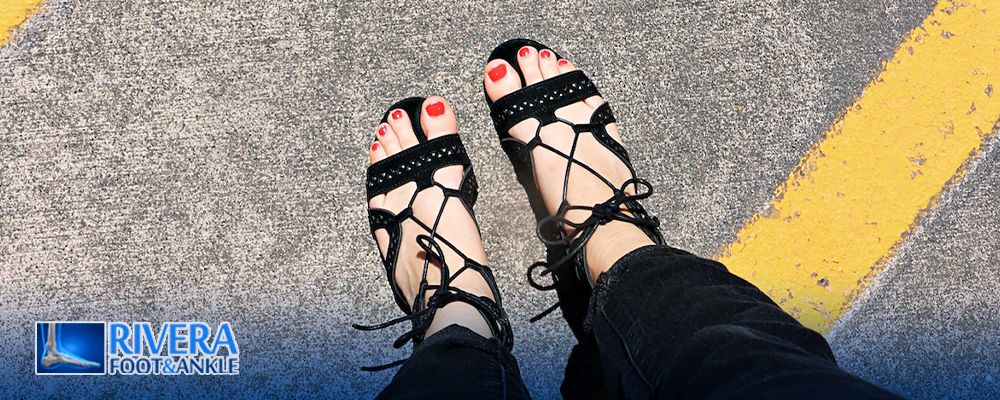
How often do you change your footwear?
Foot & ankle specialists
When do our shoes become worn out?
According to podiatrists, everyday shoes need to be replaced every 8 to 12 months – or when they start showing signs of wear and tear. But how do we know when it’s time to swap our favourite pumps, trainers or boots for a new pair?
Well, in a nutshell, if your shoes are not as comfortable or as supportive as they once were, it’s a sure sign you’ll soon need to replace them.
Over time, the material will begin to wear down, and will provide less cushioning to your feet as a result.
You may notice that the sole appears thinner than before, or there’s evidence of more excessive wear at the back of the heel or across the ball of the foot. The midsole may be creasing from overuse; the material may be starting to distort or lean in one direction; and holes or tears may be appearing in the seams. All these things are clear indicators that your shoes have been well worn and may not be providing you with the support your feet so desperately crave.
What’s more, damaged shoes can quickly become very uncomfortable. And we all know that discomfort can lead to poor posture and an unbalanced gait, which in turn can cause aches and pains not just in the feet, but all over the body.
What types of footwear need to be changed more often?
It’s especially important to replace your walking or running shoes if they are looking a little worse for wear. These types of shoes are specifically designed to absorb shock during exercise – and if they’re lacking the material or the cushioning to do this, you could be opening yourself up to injury. Most podiatrists will recommend changing sports shoes once they’ve travelled 700 kilometres with you.
The same goes for work boots. Imagine how much strain you’ll be subjecting your feet to if you embark on shift after shift in a pair of well-worn, ill-fitting work shoes! Prevent unnecessary pain and soreness by replacing your work footwear as soon as you start to notice that your feet are getting tired and sore after a day onsite.
Worn high heels are a health hazard, too. Get your favourite stilettos re-heeled if you can’t bear to let them go!
RIVERA FOOT & ANKLE: At Orlando H.Rivera DPM, our priority is to deliver quality care to informed patients in a comfortable and convenient setting. When you have problems with your feet, you need to turn to a podiatrist who listens and responds… an experienced doctor who knows the field and can effectively diagnose and treat your needs… a friendly physician who counsels you on the best ways to maintain and improve your health. Our physician(s) meet all these criteria. Plus, you benefit from a dedicated team of trained professionals who give you the individualized attention you deserve.

Call now at  (713) 691-9600 or mail us
(713) 691-9600 or mail us This email address is being protected from spambots. You need JavaScript enabled to view it. | Get A Free Estimate HERE
Orlando H.Rivera DPM
Foot and Ankle, Dr. Orlando Rivera, Advanced Foot & Ankle Specialist, Foot and Ankle Podiatry, Houston Foot & Ankle Surgical, Treatment of Foot and Ankle, Foot & ankle specialists, Podiatrist in houston, podiatrist in houston, Orlando H.Rivera DPM, Houston Foot Doctor, Foot and Ankle Surgeon Houston, Ankle and Foot Specialist Houston, Podiatrist Houston, Foot Pain Houston.



